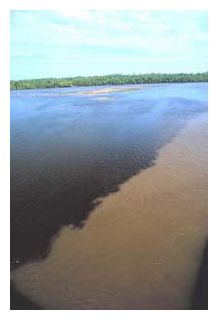
The so-called "dead zone," caused by nitrogen levels in the gulf related to human activities such as agricultural runoff, occurs when oxygen levels in seawater drop to dangerously low levels, causing severe hypoxia that can potentially result in fish kills and harm marine life.
Researchers from Texas A&M University say the size of the dead zone off coastal Louisiana has been routinely monitored for about 25 years while nitrogen levels in the gulf resulting from human activities have tripled over the past 50 years.
Some researchers predict the dead zone could exceed 9,400 square miles this year, which would make it one of the largest ever recorded.
"This was the first-ever research cruise conducted to specifically target the size of hypoxia in the month of June," oceanography professor Steve DiMarco said.
"The largest areas of hypoxia are still around the Louisiana coast, where you would expect them because of the huge amounts of fresh water still coming down from the Mississippi River."
The Mississippi is the largest river U.S. river, draining 40 percent of the land area of the country and accounting for almost 90 percent of the freshwater runoff into the Gulf of Mexico.



Reader Comments
to our Newsletter